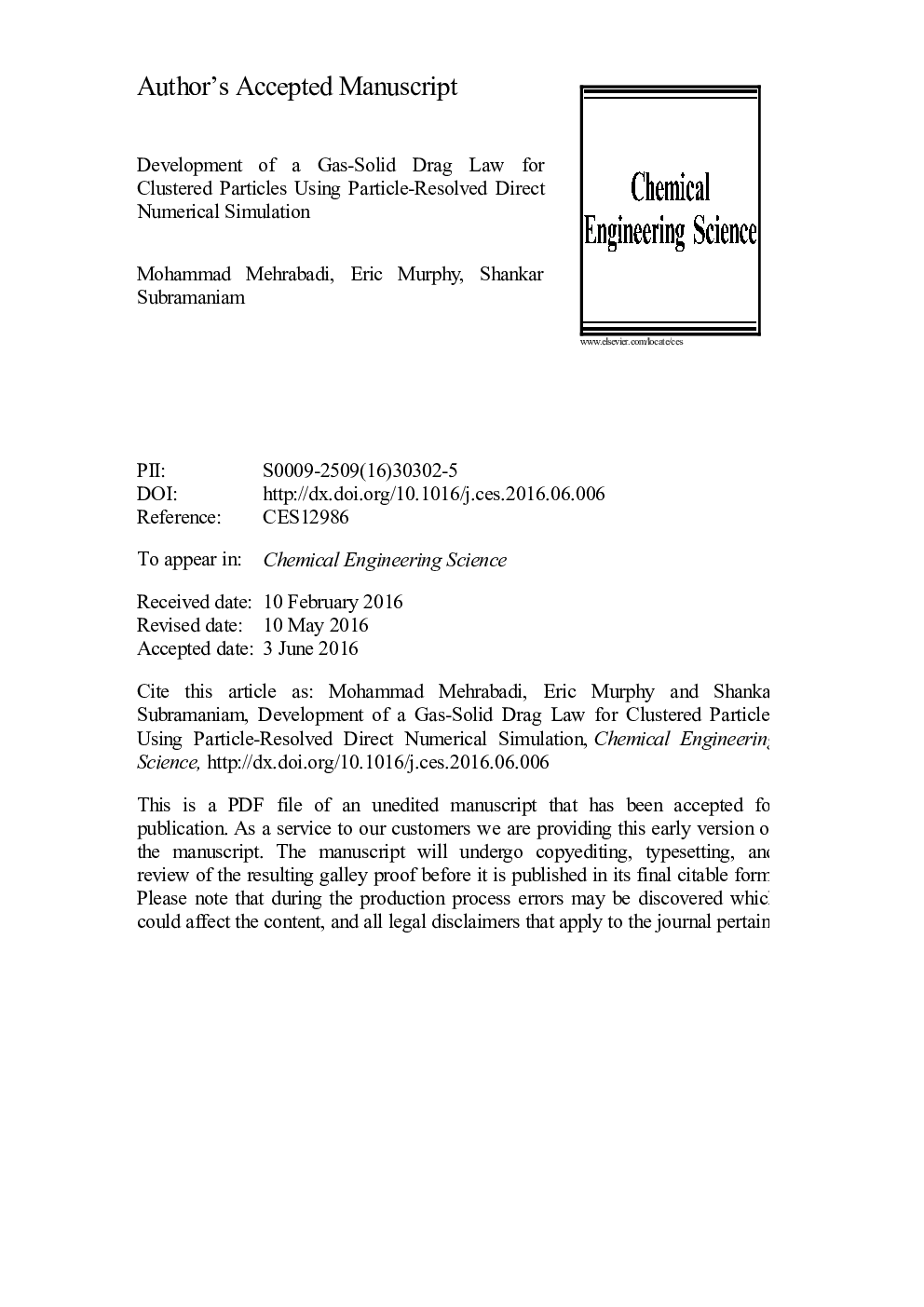| کد مقاله | کد نشریه | سال انتشار | مقاله انگلیسی | نسخه تمام متن |
|---|---|---|---|---|
| 6588990 | 456831 | 2016 | 54 صفحه PDF | دانلود رایگان |
عنوان انگلیسی مقاله ISI
Development of a gas-solid drag law for clustered particles using particle-resolved direct numerical simulation
ترجمه فارسی عنوان
توسعه یک قانون کشش گاز جامد برای ذرات خوشه ای با استفاده از شبیه سازی عددی مستقیم حل شده با ذرات
دانلود مقاله + سفارش ترجمه
دانلود مقاله ISI انگلیسی
رایگان برای ایرانیان
کلمات کلیدی
شبیه سازی عددی مستقیم مستقر در ذرات، جریان گاز جامد، پیکربندی خوشه ای قانون را بکشید
موضوعات مرتبط
مهندسی و علوم پایه
مهندسی شیمی
مهندسی شیمی (عمومی)
چکیده انگلیسی
Particle-resolved direct numerical simulation (PR-DNS) is used to quantify the drag force on clustered particle configurations over the solid phase volume fraction range of 0.1â¤Ïâ¤0.35 and the mean slip Reynolds number range of 0.01â¤Remâ¤50. The particle configurations and flow parameters correspond to gas-solid suspensions of Geldart A particles in which formation of clusters have been reported. In our PR-DNS, we use clustered particle configurations that match cluster statistics observed in experimental studies. To generate the particle configurations, we perform discrete element method (DEM) simulations of homogeneous cooling gas (HCG) systems with cohesive and inelastic particles in the absence interstitial fluid. Clustered particle sub-ensembles are then extracted from HCG simulations to match the statistics of cluster size distributions observed in experiments. These sub-ensembles are used for PR-DNS. It is found that the mean drag on clustered configurations decreases when compared to the drag laws for uniform particle configurations. The maximum drag reduction is observed in the configuration with low solid-phase volume fraction Ï=0.1 in Stokes flow, and is about 35%. The drag reduction reduces with increase in both Ï and Rem. A clustering metric is introduced to explain the behavior of the drag reduction with respect to solid-phase volume fraction. Also the behavior of the drag reduction with mean slip Reynolds number is related to the Brinkman screening length. PR-DNS results are then used to propose a clustered drag model for the range of flow parameters considered in this study. This clustered drag model provides a smooth transition between the uniform and clustered states by means of a weighting function with two model parameters.
ناشر
Database: Elsevier - ScienceDirect (ساینس دایرکت)
Journal: Chemical Engineering Science - Volume 152, 2 October 2016, Pages 199-212
Journal: Chemical Engineering Science - Volume 152, 2 October 2016, Pages 199-212
نویسندگان
Mohammad Mehrabadi, Eric Murphy, Shankar Subramaniam,
